12.17.14 Down to the Bone (and a Caramels Giveaway)

I'm also done with nuts, chocolate and sugar for the season. Enough! Those things are particularly bad for my constitution. They bring me down. Instead, I have stocked the fridge with pomegranates and sweet-tart clementines, a gorgeous block of Stilton and some fresh chestnuts. And, as always, nourishing bone broths. Don't you love it when something that has been around for millennia—fasting! kale!—suddenly becomes a trend? So it is with bone broths, which are on everyone's lists for "what's hot in 2015."
Before we go any further, let’s consider how stock differs from broth, often merely a question of semantics. A general consensus seems to be that stock is a relatively clear, unsalted liquid made by slowly simmering bones and sometimes vegetables, which is then used as the basis for sauces and soups. Broth is a simple soup in itself, more highly seasoned than stock and perhaps containing bits of meat. In most recipes the two can be interchanged, though stock is more neutral, with its salinity, strength and seasoning dependent on how it will be used.
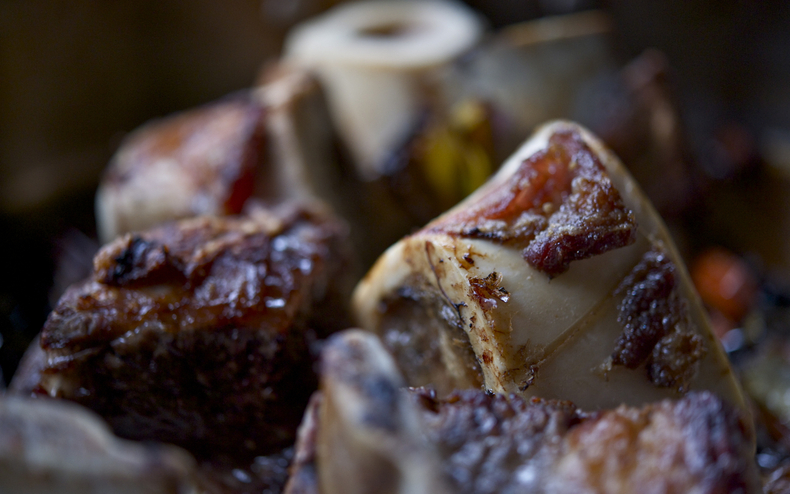
If you want to make stocks with bones, you may find the main ingredient to be a tad elusive. Soup bones have become a rare commodity, as hard to find in supermarkets—where boneless cuts of meat lie neatly shrink-wrapped to their Styrofoam trays—as they are in artisanal butcher shops, where bones are now hoarded for house-made stocks and charcuterie. I recommend forming a relationship with your local butcher, or coming upstate to buy pastured animals from the farms where they're raised. Those who have the freezer space to buy a whole cow or lamb (or share one among friends) will have ready access to the knuckles, shanks and even hooves that make the best stock. Alternatively, oxtails and short ribs are among the more readily available cuts good for broth, and combining a few meaty pieces of chuck with some marrow bones is also a fine option. For chicken broth, a whole bird works well, especially if you can find one complete with its head and feet. The more bony pieces added—like extra wing tips and necks—the higher the gelatin content, the richer and silkier the broth.
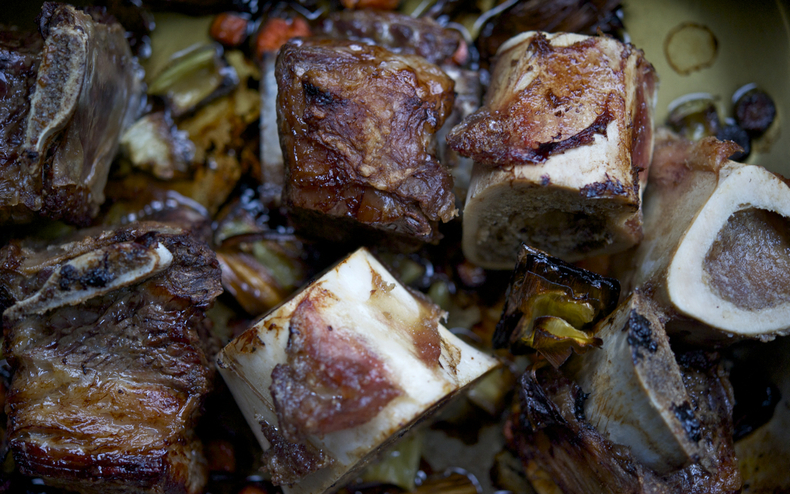
Broth made from the bones of pastured animals...
• Is rich in nutrients that can be ore readily absorbed by the body.
• Contains glucosamine and chondroitin that stimulate the growth of new collagen, repair joints, ease arthritis, and reduce pain and inflammation.
• Supports bone formation and fight osteoporosis. The calcium, magnesium, collagen and phosphorus in bone broth stremgthen and repair bones.
• Heals the gut. The gelatin protects and heals the lining of the digestive tract and aids in the digestion of nutrients.
• Supports skin, hair and nail growth, thanks to the strengthening collagen and gelatin.
• Promotes sleep and soothes the mind. Broth contains glycine, an amino acid that is very calming.
• Helps fight infections such as colds and flu.
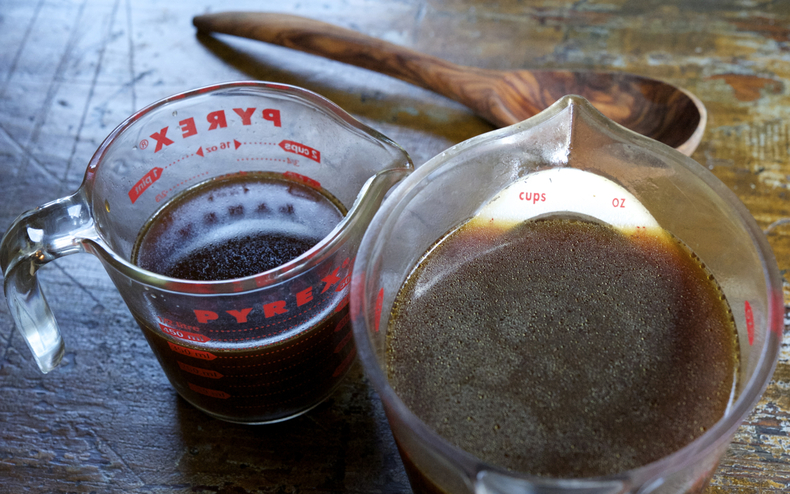
Bone broths can simmer almost indefinitely. In the old days there was always a pot of “perpetual broth” bubbling away on the stove, periodically replenished with new bones and more water. This begs the question of skimming, which is recommended for a clear stock but can seem like a hassle to harried home cooks. The good news is that the foamy grey scum that rises to the surface, while visually challenging, is essentially flavorless. It’s comprised mostly of denatured protein that eventually breaks up into tiny particles and disperses throughout the stock, causing it to become cloudy. This happens quickly if stock boils, which is why a very gentle simmer is always preferable. You can simply leave any foam on top to create a film that attracts fat and debris, and can be scooped off further along in the process. This is actually a cleverly improvised variation on the egg-white raft that is the classic technique used for clarifying stocks.
In order to render out all their collagen, beef bones should cook for at least 8-10 hours, or up to 24; poultry can take less time, though Fallon still recommends much longer than the 3-4 hours suggested in many cookbooks. A heat diffuser comes in handy to moderate the flame on a gas stove burner since surprisingly little heat is required to maintain a lazy simmer that bubbles only about once per second. For reductions—concentrated stock and syrupy demi-glâce—increase the heat and let the liquid bubble vigorously. Skim occasionally if possible, and watch the stock turn dark, thick and, eventually, quite syrupy. Reductions can be reconstituted as stock simply by adding water, but in their condensed form they take up very little space.
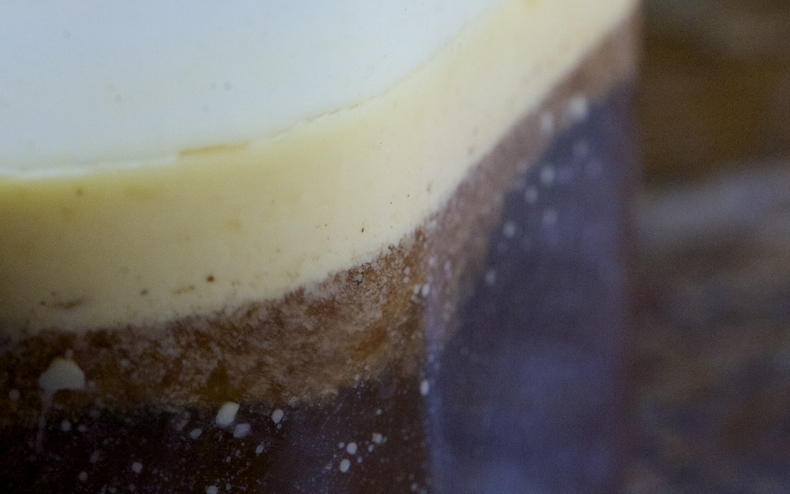
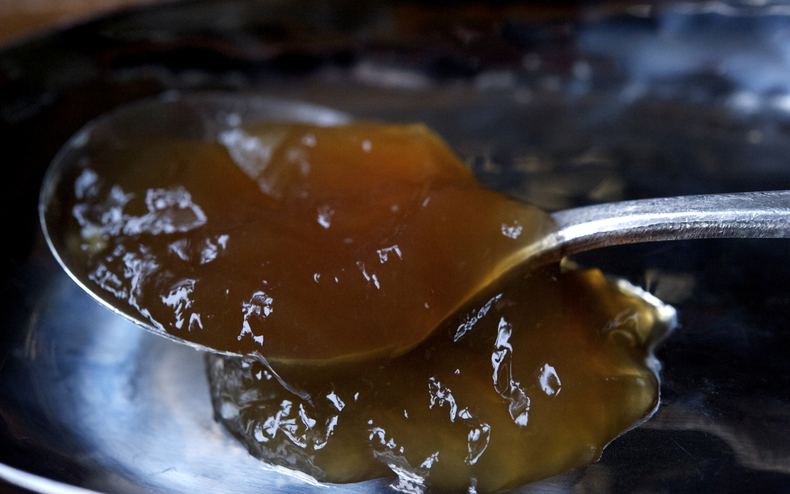

STOCK TIPS
• Rinse meat and bones well before making stock.
• Always start with cold water, which breaks down proteins and maintains clarity.
• Add something acid (vinegar, wine, tomato) to help break down cartilage.
• Roast or brown bones or vegetables first to add depth of flavor and color.
• Keep separate freezer bags for bones, shells and vegetable scraps to gradually accumulate enough for making stock.
• Freeze stock flat in Ziploc bags.
• Pour reductions into ice cube trays; when frozen, pop out and store in freezer bags.
• Use a shallow pot or skillet to reduce stock more quickly.
• To remove fat, chill stock completely and skim off hardened layer.
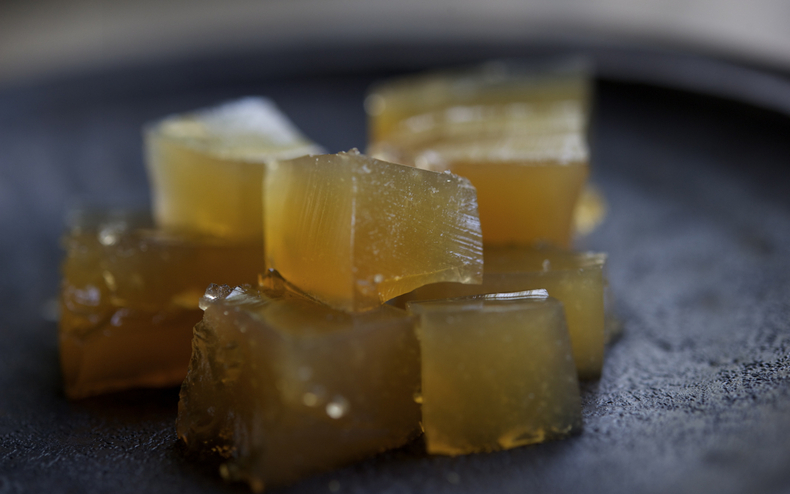
In addition to making broths to sip on their own, stocks are essential for truly nuanced and flavorful cooking. Rarely the star of a dish, stocks are the workhorse character actors without whom the show simply can’t go on. The foundation for soups and sauces, stocks can be used almost anywhere in place of other liquids with excellent results. Try them in rice or polenta, to deglaze a roasting pan or to thin a Bolognese. A lamb stew made with lamb stock heightens the intensity of flavor in a way that water and wine alone cannot. Roasting bones and vegetables prior to simmering creates an even richer depth that works well in earthier dishes, but you can also create more ethereal stocks for lighter fare. Next summer, when you’re making corn chowder, use stock simmered from the scraped cobs and swoon over the incredible sweetness. Save your shrimp shells in the freezer until you’ve accumulated enough to make a surprisingly intense stock, ideally deployed in a hearty bisque spiked with sherry and cayenne.
Much of this information was once acquired as though by osmosis in family kitchens where bubbling pots and rising dough were tended day in and day out. It’s worth keeping alive, if only for pure, greedy pleasure. Reconnect to the tradition of making your own bone broths and stocks and you’ll never look back—except when the mouth-watering aromas wafting from your kitchen conjure up blissful memories of your grandmother’s borscht, your uncle’s pozole, your mama’s Bolognese…
I'VE GOT A BAG OF MY FAMOUS CARAMELS TO GIVE AWAY TO ONE LUCKY READER WHO LEAVES A COMMENT HERE BY MIDNIGHT ON SUNDAY, 12/21!! xo
Chicken Stock
adapted from Nourishing Traditions
Note: This recipe calls for no salt. It's generally best to salt it once you know how it's going to be used. If you salt it and then reduce it for a demi-glâce or a sauce, you may find it way too salty.
- — 1 whole free-range chicken, or 2-3 pounds bony chicken parts, including necks, backs, wings and feet
- — gizzards from 1 chicken, optional
- — 4 quarts cold filtered water
- — 2 tablespoons vinegar
- — 1 large onion, skin on and coarsely chopped
- — 3 celery ribs, coarsely chopped
- — 1-2 leeks, white and light green part only, cleaned and coarsely chopped
- — 2 carrots, coarsely chopped
- — 1 bunch parsley
If you are using a whole chicken, cut off the wings and remove any gizzards and/or the neck from the cavity (these can all be used for the stock). Free-range chickens will produce much better results than a factory-farmed bird.
Cut chicken parts into several smaller pieces. Put chicken or pieces into a large stainless steel pot with the water, vinegar and vegetables (except the parsley). Let stand for 30 minutes-1 hour.
Bring to a boil, and remove all scum that rises to the top. Then reduce the heat to low, cover and simmer for 6-24 hours. The longer you cook the stock, the richer and more flavorful it will be.
About 10 minutes before finishing the stock, stir in the parsley. This imparts additional mineral ions to the stock. Turn the heat off, and allow to cool before removing chicken pieces with a slotted spoon. (Feed it to the cat!)
Strain the stock through a fine mesh into a large bowl, pot or jar and refrigerate, covered, until any fat rises to the top and congeals. (I usually leave it overnight.) Skim off this fat and reserve the stock in covered containers in your fridge or freezer. It will keep in your fridge for 3-4 days; if you want to keep it there longer, you need to boil it again. Otherwise, you can clarify the stock and it will keep refrigerated for quite a bit longer.
 Download Recipe
Download Recipe
Beef Stock
makes about 8 cups
- — 4 pounds pastured beef marrow bones, knuckle bones
- — 1/2 cup cider vinegar
- — 1 large onion, skin on, quartered
- — 2 carrots, sliced
- — 1 leek, white & pale green only, cleaned and sliced
- — 2 celery stalks, sliced
- — 3 pounds meaty rib or neck bones
- — 2 tablespoons tomato paste
- — 5 cloves garlic
- — 2 bay leaves
- — 3 sprigs thyme
- — 1/2 teaspoon green peppercorns, crushed
- — 1 bunch Italian parsley
Place the knuckle and marrow bones in a very large pot with vinegar and cover with water. Let stand for 1 hour.
Meanwhile, place the meaty bones in a roasting pan and brown at 350º in the oven. When well browned, add to the pot along with the vegetables. Pour the fat out of the roasting pan, add cold water to the pan, set over a high flame and bring to a boil, stirring with a wooden spoon to loosen coagulated juices. Add this liquid to the pot. Add additional water if necessary, to cover the bones; but the liquid should come no higher than within one inch of the rim of the pot, as the volume expands slightly during cooking. Bring to a boil. Skim scum as it rises to the surface. When scum no longer rises to the surface, reduce heat and add the thyme and crushed peppercorns.
Cook stock at a very lazy simmer for at least 12 and as long as 72 hours. Just before finishing, add the parsley and simmer another 10 minutes.
You will now have a pot of rather repulsive-looking brown liquid containing globs of gelatinous and fatty material. Don't despair! After straining, you will have a delicious and nourishing clear broth.
Remove bones with tongs or slotted spoon. Strain the stock into a large bowl. Let cool, then refrigerate and remove the congealed fat that rises to the top. Transfer stock to smaller containers and refrigerate, or freeze for long-term storage.
 Download Recipe
Download Recipe






39 Comments